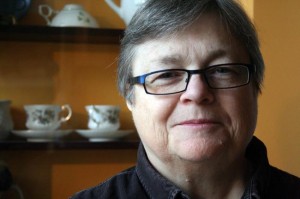

"Your dedication to this issue is making a better and
brighter tomorrow for our nation. I truly value your insight."
- Vice President Joseph R. Biden Jr. (2011)

- Home
- About Mark Wynn
- News
- Ellen’s Hand – Tribute to Ellen Pence
Ellen’s Hand – Tribute to Ellen Pence
August 16, 2010
By Mark Wynn
She didn’t know it, nor did I, but Ellen’s hand touched me in many ways: as a cop, a “system’s advocate” (as she described it), and as a survivor of domestic violence. All those years ago in a rundown rental in south Dallas, I never imagined that many years later I would speak (with a Southern accent) her words to my peers and to thousands of police officers around the world—the words of a very wise and patient shepherd, a shepherd who is still working in the women’s movement after more than 30 years, changing the culture of a fraternity of men who did not want to be changed, saw no need to change, or even understood why they should change from years of accepted policing practice. I looked up at his face and badge, a giant of a man, from behind my mother’s trembling leg. “If I come back one more time you are going to jail and the State will take your kids.”
This was the fraternity of collusion she most certainly has changed. I can only imagine how she felt during that first training she conducted with survivors and advocates in Duluth. The folded arms, the “What makes you an expert on law enforcement?” statements. My recollection from my recruit/academy days was, “Oh, we heard you were coming. You are the huggy, touchy feely lady,” made to the brave Nashville shelter director who was following Ellen’s lead. I also remember the misguided therapeutic policing model of not arresting, empowering the offender, and leaving the victim in harm’s way. While Ellen worked to understand and change law enforcement, I stood on the front steps as an illprepared rookie.
Most will tell you the first call as a lead officer is a memorable moment. I knocked while my training officer stood just behind me, making sure I was safe and making sure I didn’t put my foot in my mouth. A woman answered the door, a woman who looked very much like my mother. Trying to hide the fear, she whispered, “It’s okay, he’s asleep, you can leave now.” Standing there speechless, I heard my mother’s voice and then the voice of 200 years of tradition: “Let’s go, this call is over.” The peer pressure was unbelievable. In a clumsy but respectful way I asked my training officer to wait for me in the patrol car. He agreed, and I crossed over the threshold and never stopped. If only I had possessed the
Power and Control Wheel to use in this teachable moment, not for her but for my senior officer. I would have spoken Ellen’s words: Did you know that domestic violence is often characterized by a series of violent and controlling behaviors by one family member to another, like sending her out to talk to the police, hoping they will just leave and never hold him accountable?
Ellen has taught me through her work the meaning of safety and justice. They must work together in order for the law to keep its promise. To me, that means understanding our role in helping that victim who reminded me of my mother, helping victims step out to a compassionate community and process, a path to equality, safety, and basic civil rights. What I would have given to be transformed from the Dallas of 1960 to Duluth of 1980. Please don’t mistake my criticism of law enforcement’s response to violence against women as “sour grapes.” I view it from the third of four generations of a police family who have witnessed the worst and the very best in our profession—men and women who mourned the loss of a brave officer or deputy killed in the line of duty responding to a domestic violence call but could not break with tradition and connect the two; victim safety and officer safety can be one and the same. The Power and Control Wheel, the Duluth Domestic Abuse Intervention Project (DAIP), Batterer’s Intervention, Child Custody and Visitation Centers, Community Coordinated Response, Safety and Accountability Audits, Rural Technical Assistance, the Advocacy Learning Center, and the St. Paul Blueprint for Safety have all become our catalysts to change the profession and our communities. Ellen has had a guiding hand in all of these projects and more. She has worked to change the way we look at violence, understanding the difference in incident-based criminal justice to understanding course of conduct and the importance of context. The context in which violence occurs must be understood.
This was truly a course change for the police culture. I’ve heard it in conversations across the United States, with police, judges, mayors, legislators, and advocates. How do we stop victim blaming? How do we as a community see violence against women? How do we change the relationship of officer to victim and the offender? Who is responsible, or better yet, how am I responsible? If I were the victim, what would I need, what would I do? The answer has been, over and over again, let’s look at Duluth. Let’s ask Ellen.
Our experience in Nashville in the late 1990s was directly influenced by Duluth and Ellen Pence. Our domestic violence homicide rate was high and the priority of the crime was low. Understanding and leadership were missing, as was trust in the criminal justice system. No longer could we be myopic and ask one another “What’s next?” Like thousands of communities across the country, then and now, we looked to Ellen’s work and the Duluth approach. That approach meant we had to ask the victim “What do you need?” It meant we had to make women’s safety central. We had to put egos and obstacles aside and agree the police response was only one of a series of services that had to work side by side as equals. Probation, advocates, judges, the clergy, child protection, adult protection, legal aid, the prosecutor, and others started to take responsibility. Of all the great things we and other communities have accomplished, changing our governments and changing our communities to prevent violence against women is an amazing milestone. One of the great markers in the milestone has been the Power and Control Wheel. I appreciate how important it has been for victims, advocates, judges, prosecutors, batterer’s intervention program facilitators, and others, but for law enforcement, it was a breakthrough. For the first time, we had a clear and understandable model of what the pattern of abuse and the power differentials really looked like. We struggled through the 80s as the criminal codes changed in every state, making reporting and arresting mandatory. Ellen brought us to the understanding of how we in an incident-based criminal justice system have produced injustice to victims of a course-of-conduct crime. It wasn’t always because we didn’t care about the dangerous position the victim was in but because we are true to our policing software. This software was given to us by our programmers, who were programmed by well-intentioned but uninformed law enforcement trainers. These same trainers often would not admit our weakness and reach out to the educated advocate for advice. DAIP gave us the model and often the encouragement to ask for help from others.
While working with those 200 women in Duluth in the early 80s to create the Power and Control Wheel, Ellen may not have realized it but she and they gave law enforcement a roadmap or Rosetta Stone to deconstruct the crime. We also have used it to construct a
finished puzzle to one of the most sophisticated and manipulative criminal personalities in our history. The puzzle spells out the power and control tactics used against victims. Those same tactics are used against the responding officer. We didn’t see it or understand it at first. The greatest gifts you can give a comrade in arms are the gift of knowledge to survive and the gift to keep another alive. Thank you, Ellen.
We started with the biggest piece of the puzzle, intent. What is the intent of the offender? What is the meaning of the act to the victim? What is the effect of the violence on the victim? What is the context of any given act of violence? How much violence, coercion, or intimidation accompanied the violence used by the offender? Without clear direction, we found ourselves arresting the victim for committing legal self-defense. Our early, uniform method of investigation was the same as that of any other criminal case. When we heard “Let me tell you what happened 3 months ago,” we had a tendency to, and were trained to, stop the victim and remind her we only needed to know what happened tonight. We had a lot to unlearn.
Once we started putting Ellen’s wisdom into practice, we saw it—a pattern of well taught and rehearsed behavior. We heard or witnessed the offender using intimidation against the victim by making her afraid: using looks, actions, and gestures; by smashing things (usually her personal items); abusing pets; or displaying weapons. The closer we got to the offender, he used the same tactics on us by not following our instruction to separate, following us from room to room, and taking the aggressive stance—jaw clinched, fists balled, and eyes set. We now appreciate the ability of the victim to read body language just like cops, both of us often living and surviving in a world of close quarter combat—and yes, reading our body language as well.
We saw the isolation of the victim by controlling what she did, who she saw and talked to, what she read, where she went; limiting her outside environment; and using jealousy to justify his actions. We saw it by not letting us in the home: stopping us at the front door or meeting us in the driveway or on the front porch, slamming the door in our faces, making us call for back-up and struggling to gather the probable cause to make a legal forced entry into the home. Once we made our entry, it was as if we were in the wrong place. The isolation gave him enough time to “get the story right” with the victim and children. It gave him time to manage and clean the crime scene. This was not the behavior of an out-of-control offender but of a very organized criminal personality.
We began to recognize the economic abuse: preventing her from getting and keeping a job, making her ask for money, giving her an allowance, taking her money, and not letting her have access to the family income. How did we hear it? “You must know how it is to be a man and have your wife spend all of your money” or “It’s so stressful being the breadwinner of the family when she doesn’t help, you know what I mean?” He was hoping we would bite just because we, as men, understood one another. This was an invitation to the fading “Good Ole Boys Club.”
We now take note of the old tried and true male privilege routine while pulling up his pants and telling us “I don’t know how you run your home, but I wear the pants in this family,” explaining that he had to “sit his wife down to have a little talk with her” or telling us “you can’t rape your wife.” We learned the hard way this can be the most dangerous of behaviors for the officer. We are the ones who deliver the bad news that the law has no tolerance for criminal behaviors taught to him by his father, who was taught by his father. As proof, look to the police memorial in Washington, D.C., for the names of the fallen officers who have died delivering that news and protecting victims of domestic violence.
When she was too afraid to report, he was treating her like a servant, making all the big decisions and defining their roles and, on occasion, we would hear, “Every child we’ve had was conceived through rape.” Racism and sexism with another coat of paint.
We see it and now know what the coercion and threats mean, by making and/or carrying out threats to do something to hurt her; threatening to leave her, commit suicide, report her to welfare; making her drop charges; or forcing her to attack the investigating officer out of fear of what will happen tomorrow. We hear it as, “If you arrest me, you better arrest her” or “Do you have a warrant?” and “You work for me and I’ll have your badge.” The worst is evident in cities such as Pittsburgh, Birmingham, Nashville, Tyler, Los Angeles, Anchorage, and scores of others where the threats turned to acts of killing officers, judges, advocates, or anyone who dared to help the victim escape.
As old as the “two beer” excuse of the drunk driver, we hear the minimizing, denying, and blaming. For him, it’s making light of the abuse and not taking her concerns about it seriously or saying the abuse didn’t happen and shifting responsibility, saying she caused it. For the trained officer we now record, “It’s not that bad, she’s crazy,” or the nice guy routine of how they respect law enforcement and thought about being a police officer years ago.
Using the children seems to be a standard. She experiences it by him making her feel guilty about the children or threatening to use the child and in so many cases using the visitation to harass her. For the officer, we see the children being pulled into the arrest or to court. We know the heartbreak of the child later being arrested for other crimes or abusing the mother as a teenager or taking the learned behavior to the hallways of the school.
Armed with this knowledge, we set out in law enforcement academies across the country to build our case for change. It gave us a critical piece of evidence to push back the reluctance of the older officers. After all, how could you argue with this new information when you had witnessed it throughout your career but just could not put a label on it? Who you hire and how you train law enforcement officers is key to elevating our profession to greater heights. Ellen, the Law Enforcement Resource Center of Minneapolis, and DAIP gave us the building blocks with the new Law Enforcement Response Curriculum for a fresh start with recruits. The video vignettes depicting officers responding to the call not only gave us a model but also opened up meaningful discussions—discussions about victim and officer safety, evidence collection, interview techniques, victim sensitivity, impacts on children, and how the offender uses power and control. “Now I get it.” Ask any police instructor, and she or he will tell you this is music to their ears coming from the mouth of a student. The big payoff has been with those same recruits who are now moving into top leadership positions directing training programs, creating domestic violence and sexual assault units, promoting Family Justice Centers, addressing domestic violence in the police family, and influencing policy and standards for the future. This all brings us back to Ellen’s message of keeping the victim safe.
A wise man said that the sure path to change is gentle pressure relentlessly applied. Ellen has gently but persistently moved us from the days of writing a domestic violence incident on a three-by-five card to creation of the St. Paul Blueprint for Safety. This interagency response to domestic violence crimes was a product of 2 years of hard work by the St. Paul Police Department, the St. Paul Domestic Abuse Intervention Project, and some of the greatest minds in violence prevention, all under the watchful eye of Ellen Pence. This work will be applied and studied for years across the country and around the world. It is anchored in six foundational principles as essential characteristics of intervention to maximize the victim’s safety and hold the offender accountable. This 30 years worth of knowledge promotes (a) adhering to an interagency approach and collective intervention goal, (b) building attention to the context and severity of abuse into each intervention, (c) recognizing that most domestic violence is a patterned crime requiring continued engagement with victims and offenders,(d) ensuring swift and sure consequences for continued abuse, (e) using the power of the criminal justice system to send messages of help and accountability, and (f) acting in ways that reduce unintended consequences and disparity of impact on victims and offenders.
I survived those days in Dallas, those days without shelters or advocates. Those were the days without well trained police officers or an understanding community. My view now is not of a clinician or academic but the view of a practitioner whose journey started in 1959 as a powerless child, witnessing the crime that Ellen has struggled tirelessly to dismantle for violence-free succeeding generations. So here we are today. We see the best in those many Pence-influenced departments and communities. We see the rebuilding and saving of lives.
I proudly report after all my years in law enforcement, I was not just another police lieutenant. I am one of her many lieutenants, like so many others touched by Ellen’s hand. The true impact of the contributions that Ellen’s research, devotion, and dedication has had on law enforcement, domestic violence survivors, and me—both as a cop and as a man—are too vast to be adequately addressed in this space. And so let me conclude by simply offering my thanks, on behalf of all of the police officers, domestic violence victims, and countless others whose lives were saved as a result of Ellen’s work.
Posted on: 4 May, 2012
- Domestic Violence in The Law Enforcement Family: Past Present and Future
- Domestic Violence From an Officer’s Perspective 2015
- Editorial Wichita Eagle – August 19, 2015 – Domestic violence deaths an unacceptable tragedy
Recent News
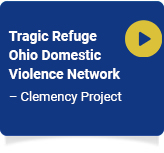
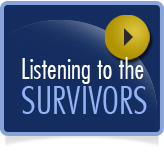




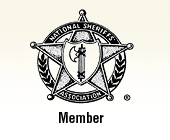

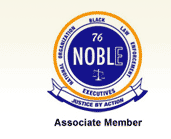
Mark Wynn Consulting | info@markwynn.com | 2500 Murfreesboro Road - Suite 105 - PMB 135 | Nashville, TN 37217
Phone: (615) 360-3994 | Fax: (615) 469-0823
